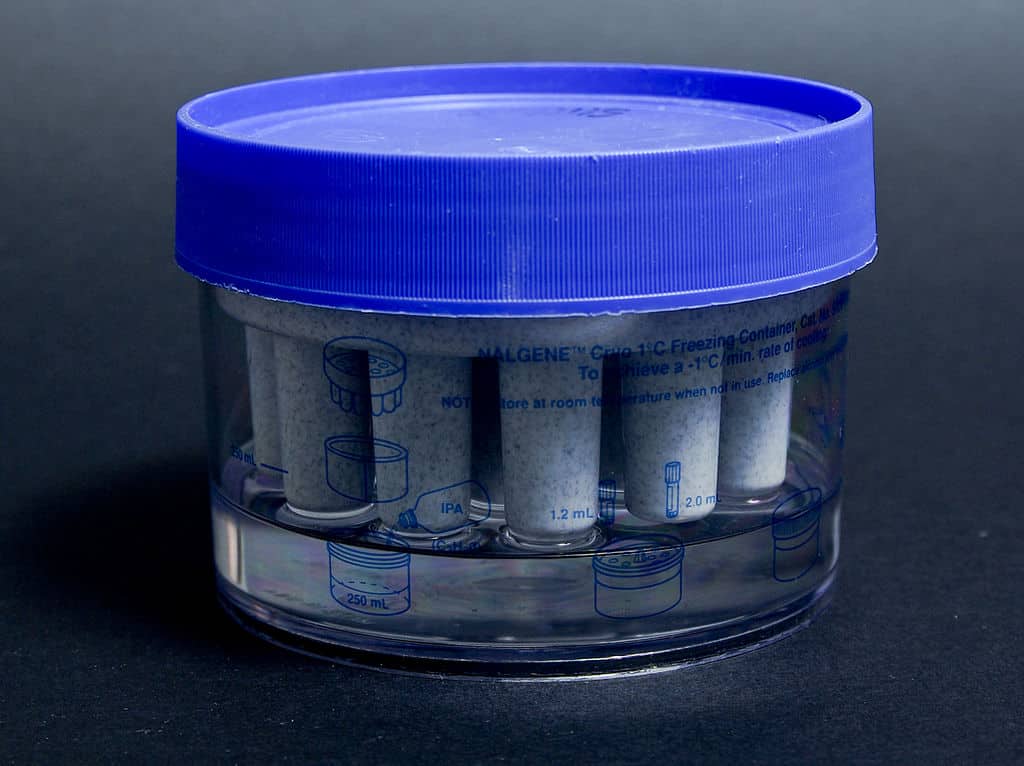In the face of the biodiversity crisis, where species are disappearing at an alarming rate, scientists are turning to an unconventional but promising solution: cryo-freezing genetic samples of animals. Just as egg freezing has revolutionized the preservation of human fertility options, cryobanks—living cell banks—may hold the key to curbing species extinctions.
A recent study in Zoo Biology sheds light on the vast potential of cryobanks in addressing global conservation challenges.
“As wildlife populations continue to decline around the globe, there has never been a more critical time to collect and preserve genetic samples from threatened species,” said lead study author Andrew Mooney, Dublin Zoo and Trinity College Dublin’s School of Natural Sciences.
“Cryobanked samples provide unparalleled conservation opportunities, however, we must make a concerted effort to work together and collect samples now, before it is too late.”
Frozen time capsules
Living cell banks are repositories that store animal genetic materials, including DNA, embryos, semen, and live tissue, at ultra-low temperatures. These preserved cells can be cultured and utilized for various purposes, such as genetic analysis, assisted reproductive techniques, and maintaining genetic diversity in animal populations. They may even play a crucial role in reintroducing species back into their natural habitats.
To develop a framework for prioritizing species for future sampling, researchers analyzed the contents of the Frozen Zoo at the San Diego Wildlife Alliance (SDZWA). The Frozen Zoo is the world’s largest and most diverse collection of living genetic samples. The study also drew insights from the Species360 Zoological Information Management System (ZIMS), the world’s largest database of species knowledge.
Currently, the SDZWA Frozen Zoo houses genetic samples from 965 different species, including 5% of amphibians, birds, mammals, and reptiles listed as threatened on the International Union for Conservation of Nature Red List of Threatened Species. However, by expanding sampling efforts to include zoos and aquariums worldwide, the representation of threatened species in cryobanks could increase to an impressive 16.6%, with an additional 707 species added to the collection.
Equally noteworthy are genetic samples from 50% of species currently listed as extinct in the wild within the SDZWA Frozen Zoo. However, this number could soar to 91% through collaborations with the zoological community. Such an increase would offer a lifeline for species teetering on the edge of extinction, providing a potential path toward their recovery.
The implications of these findings are profound. Cryobanks have the power to safeguard genetic diversity, which is crucial for species’ long-term survival. By preserving genetic materials, scientists can better understand the genetic makeup of endangered populations, identify potential threats, and develop targeted conservation strategies. Furthermore, cryobanks offer hope for the revival of extinct species through advances in assisted reproductive technologies and genetic engineering.
While cryobanks provide a powerful tool in the fight against species extinctions, they are not a panacea. Conservation efforts must still focus on habitat protection, reducing threats to wildlife, and sustainable management practices. Cryobanking complements these efforts by acting as an insurance policy, preserving genetic resources that may be critical for species recovery in the future.
“We are in a biodiversity extinction crisis with over a million species likely to be threatened with extinction over the coming decades,” said Yvonne Buckley, Professor of Zoology in Trinity’s School of Natural Sciences. “While our first priority is to prevent species from declining in the wild, cryobanking provides a means to safeguard crucial genetic diversity and reintroduce it back into populations to increase their adaptability and resilience.”










